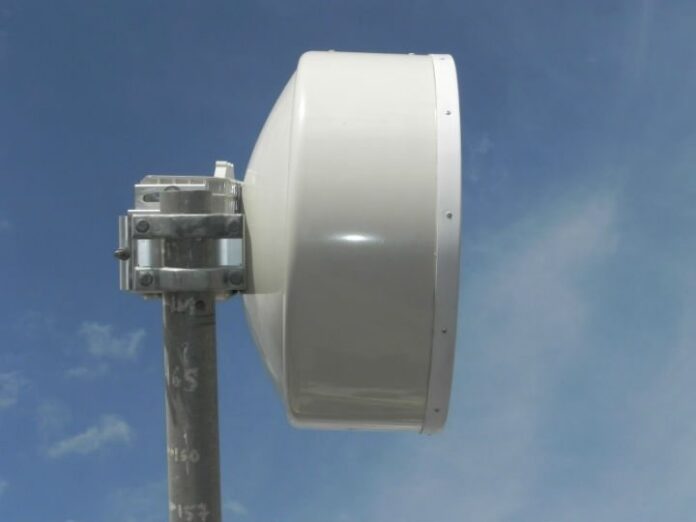Editor’s Note: Welcome to our weekly feature, Analyst Angle. We’ve collected a group of the industry’s leading analysts to give their outlook on the hot topics in the wireless industry.
Discussion around the cellular backhaul market in the United States today places a heavy emphasis on fiber and putting more glass in the ground — and for good reason. Ultimately, Atlantic-ACM believes that in order to meet expected growth in bandwidth consumption, fiber will be the backhaul technology of choice at the majority of cell sites. That being said, alternative technologies meet the needs of mobile operators for hard-to-reach places. Today, the primary alternative solution to fiber, other than copper T1-based backhaul, is microwave. With the ecosystem continuing to be crowded with equipment vendors, one often overlooked, but very real question in the wireless space is what will drive microwave business in the United States, and what are the opportunities?
Microwave has deep a history within the U.S. mobile network
Understanding microwave’s historic role helps to shed light onto potential advantages and disadvantages of realizing future opportunities. Microwave has historically played several different roles within U.S. mobile operator networks.
Rural network/off-grid needs: The United States is not covered by copper or fiber networks in all places where wireless towers need connectivity. Solutions can simply consist of a relay from a hard-to-reach cell site to a hub site on the fiber network, or it could consist of a cluster of towers in hard-to-reach locations. For many years microwave has supported backhaul connectivity for off-grid towers and, in areas where operators cannot get backhaul providers to cost-justify copper/fiber builds, microwave provides a compelling alternative solution.
Complete network builds: Microwave played a central role in Clearwire’s nationwide network build, enabling an operating expense-light approach to delivering a WiMAX network. (Clearwire architected its backhaul network to use microwave in the vast majority of its sites, with microwave hub sites backhauling traffic to the core fiber network.) Clearwire represented a test network scenario as the network never was fully loaded. No major U.S. carriers have repeated this deployment scenario since.
Today, the prevailing attitude among U.S. mobile operators it that microwave’s role will be primarily for rural backhaul and for links to off-grid cell sites when fiber and copper connectivity is cost prohibitive.
Microwave has several key weaknesses that prevent it from playing a broader role in the U.S. backhaul ecosystem
Although microwave holds the potential for opex-light backhaul economics (large capital costs revolving around equipment, but minimal ongoing service costs), microwave radio installations require lease amendments for tower contracts, creating an opportunity for tower companies to increase future lease costs at tower sites. Moreover, as towers become more crowded, the addition of more radios drives new engineering requirements, potentially leaving mobile operators exposed to costs for upgrading or adding reinforcement to existing infrastructure. All in, microwave deployments come with the potential for considerable additional cost.
The need to future-proof capacity also prohibits widespread microwave deployment. In metro areas, capacity at macro sites is ramping rapidly. The anticipated five-times ramp in mobile network bandwidth over the next five years will prevent microwave deployments from inclusion in massive, wide-scale network deployments as fiber remains a much better suited alternative to take on the expected capacity requirements of core cell sites. However, these deployments will not prevent it from meeting niche needs in cell sites with lower levels of bandwidth requirements. When tower costs are not prohibitive, or potential capacity constraints do not exist, backhaul will continue to offer a compelling long-term backhaul solution.
Microwave’s network role going forward will hinge upon the ability of vendors to take advantage of three key trends
—Site densification: As macro-site densification moves from core urban areas to suburban and rural areas, look for microwave to potentially play a role in markets where fiber is not available and operators cannot cost-justify fiber builds. This opportunity will only be realized if tower site leasing and engineering cost economics are favorable over the long term (too much increased cost from these factors could drive future-proofing via fiber build partners).
—Small cell expansion: Atlantic-ACM’s 2013 Metro Carrier Report Card Survey found that 13% of small cell backhaul spend will be allocated to microwave solutions. The outdoor small-cell opportunity in the United States remains nascent as operators are looking for ways to make both backhaul and site acquisition economics work. Microwave has the potential to play a role going forward if equipment form factor can meet low weight and size requirements. Operators also will need to make sure they don’t get squeezed for additional lease costs for attachments of additional radios. If these impediments can be overcome, microwave could have a strong future in outdoor small-cell deployments.
—Rural network expansion: Rural LTE coverage in the United States continues to ramp up, translating into opportunities for microwave deployments for all the reasons already discussed. Look for this to be the key to microwave’s future going forward as rural network expansion will drive significant opportunities for microwave vendors.
At the end of the day, fiber will continue to dominate the U.S. wireless backhaul ecosystem as exploding bandwidth demand drives fiber-based connectivity. However, for ubiquitous network coverage, operators will have to look to alternative solutions in rural and hard-to-reach locations. Microwave will continue to play a role in places where its deployment will not face insurmountable bandwidth growth pressure or cell-site attachment economics. The wireless space is heavily colored by price competition, so microwave vendor success will largely be driven by the ability to target opportunities that improve mobile network cost dynamics.
Aaron Blazar works as a VP for Atlantic-ACM on projects ranging from market sizing and forecasting to corporate strategy covering both the wireline and wireless telecom markets. Blazar has a broad perspective on the telecommunications industry and expertise in market segmentation, market analysis, market entry strategies and statistical analysis.
Photo courtesy Telimart


